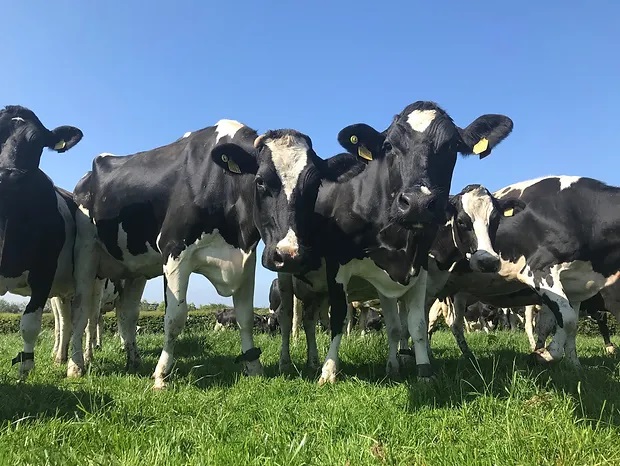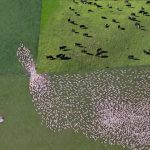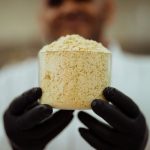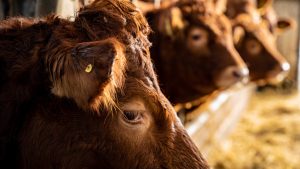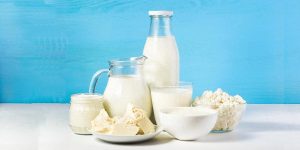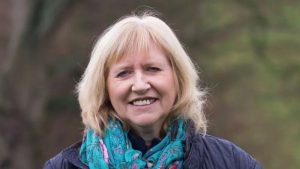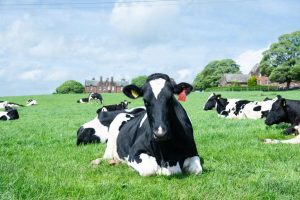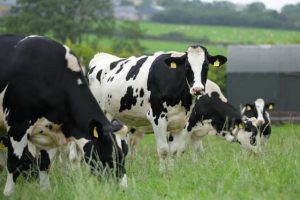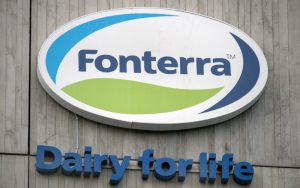
The family milk 120 cows and rear all beef sired calves. The herd is currently averaging 8,000 litres on 2.4 tonnes of concentrate with a target of achieving 3000 litres of milk from forage. Alan and Amy have taken the opportunity to become Grasscheck farmers for the Northeast Antrim area. Kathryn George, Dairying Development Adviser, College of Agriculture, Food and Rural Enterprise (CAFRE) discusses the benefits of utilising data to drive decision making in this dairy business.
Currently there are 15ha in the grazing area and the cows are out by day and housed at night, fed silage and topped up with concentrate in the parlour and out of parlour feeders. After second cut there is a further 8ha brought into the grazing platform. If growth and weather conditions allow the herd will graze day and night, allowing the silage to be dropped out of the system.
Alan and Amy work in partnership, they complete the farm walk on a weekly basis and upload to grazing software Agrinet. Grass measuring generates two key pieces of information, firstly the growth rate and secondly the grass wedge depicting amount of grass on hand and where it is located. The growth rate in conjunction with the weather forecast is key to determining the grazing decisions for the next week, coupled with the grass wedge projecting if there will be a potential surplus or deficit. This spring has been particularly challenging with slower growth in April, May and cooler temperatures experienced in June. Having good timely information has been key to managing grass allocation to the herd through these conditions.

Grass samples are taken fortnightly and sent for analysis to determine dry matter percentage, metabolizable energy, sugar content and crude protein.
Alan says that it is this: “Data coupled with the grass measurement figures offers me plenty of information to base decisions on. It’s also helpful to compare your information with the other Grasscheck farmers in the North Antrim area, and to identify trends.”
Amy works off farm as a nutritional adviser for a local feed compounder and sets the feeding levels for the herd. Last year the couple installed a 20-unit rapid exit parlour with a computerised feed to yield system. Now the out of parlour feeders and the milking parlour are linked enabling targeted feeding of the herd. Previously feeding rate decisions were based on monthly milk recording, whereas now individual yields are available daily.
Separate feed tables are set up for the heifers and cows. This ensures individual animals nutritional needs are met. Currently heifers are set at Maintenance Plus (M+) 17.5 l litres and cows M+ 22.5 litres and fed to yield at a rate of 0.4kg/litre above maintenance. This development has further enhanced feed efficiency allowing targeted feeding of the herd. One of the feeding issues has been that the cows are run as one herd calving from August through to the start of May with 80% calving before Christmas. There can be challenges with managing intakes on grass for early lactation animals.

Kathryn George concludes that: “Having access to good data and more importantly making the time to utilise the information to make timely decisions with clearly defined targets, helps to optimise farm performance.”
You can now read the most important #news on #eDairyNews #Whatsapp channels!!!
🇺🇸 eDairy News INGLÊS: https://whatsapp.com/channel/0029VaKsjzGDTkJyIN6hcP1K
